 |
| Marc Chagall: Firebird, 1945 |
 |
| Joan Miro: Firebird, 1927 |
 |
| Edmund Dulac: Firebird |
THE FIREBIRD
IGOR STRAVINSKY
The ballet is based on Russian folk tales of the magical glowing bird of the
same name that is both a blessing and a curse to its captor.
INFORMATION FROM THE
LA PHILHARMONIC
WEB PAGE ABOUT THE PIECE
LA PHILHARMONIC
WEB PAGE ABOUT THE PIECE
Composed: 1909-1910, rev. 1919
Length: c. 20 minutes
Orchestration:
2 flutes (2nd = piccolo), 2 oboes (2nd = English horn),
2 clarinets, 2 bassoons, 4 horns, 2 trumpets, 3 trombones,
tuba, timpani, percussion, harp, piano, and strings
First Los Angeles Philharmonic performance:
August 10, 1926, Eugene Goossens conducting

the history of music in the last
century would have been altered
if the extraordinary ballet
impresario Sergei Diaghilev
 |
| Sergei Diaghilev |
had not decided to gamble
on the young, relatively
unknown Stravinsky.
Diaghilev's Ballets Russes
Paintings of Dancer Tamara Karsavina
in "The Firebird"
– which the émigré Russian had
established in Paris – was just
starting to take the West by storm,
and Diaghilev wanted a splendid
new production for the climax of its
season in 1910. His initial plans for
better-known composers fell through,
so Diaghilev, on a hunch, gave the
commission to Stravinsky, then
in his late 20's.
It was a risk for
everyone concerned,
since The Firebird would
be the first production by the
emerging ballet company to
feature an entirely new score.
Stravinsky was handed a
scenario (devised in part
by Fokine, the show's
choreographer)
that drew on old
Russian folklore. The
Firebird tells of the downfall
of a powerful, ogre-like figure
of evil, Kastchei the Deathless,
 |
| Viktor Vasnetsov: Kashchey the Immortal |
 |
| Ivan Bilibin: Koshchey the Deathless, 1901 |
through the intervention of a beautiful rare
bird – the enchanting character of the title.
The miraculous Firebird is so called on
account of her beautiful feathers, which
glitter and flicker like flames.

Kastchei is in the habit of seizing pretty
young princesses as captives while turning
the knights who arrive to rescue them into
stone. Crown Prince Ivan, the protagonist,
enlists the Firebird's help to destroy
Kastchei and free his victims.
 |
| Prince Ivan and the Firebird illustrated by Ivan Bilibin, 1901 |
You can readily hear how Stravinsky's
own imagination must have caught fire
(he even set aside his work on a bird of
a different feather – the fairy-tale opera
The Nightingale – to take up Diaghilev's
invitation). The Firebird’s score blends
the orchestral wizardry Stravinsky had
learned as a student of Rimsky-Korsakov
with the vitality of Russian folk
music to yield a dazzling, evocative
atmosphere. Throughout his later
career, Stravinsky remained especially
fond of The Firebird, returning to create
three different concert versions that he
himself conducted tirelessly (a savvy
financial move on the composer's part).
The most popular is the second of these
suites, introduced in 1919, which uses
less than half of the original ballet score
and simplifies some of its orchestration.
The Firebird's musical language shifts
between exotic, chromatic gestures to
illustrate the supernatural dimension
(including a powerful non-Western
scale that would later feature in the
Rite of Spring's harmonic vocabulary)
and the sing-song simplicity of folk
song for the mortals. The suite opens
with a spooky conjuring, low in the
strings, of Kastchei’s magical realm.
INTRODUCTION
FROM THE FIREBIRD SUITE
SBelgian Radio and Television Philharmonic Orchestra
In his illusory garden, Prince Ivan
encounters the Firebird, which is
depicted with opulent colors and radiant
trills. (Diaghilev spared no expense in
the similarly gorgeous costumes
Léon Bakst designed.)
COSTUMES



A calmly pastoral section follows, featuring
Stravinsky's already characteristically
imaginative scoring for woodwinds. Prince
Ivan observes the princesses who have been
captured by Kastchei performing their ritual
Khorovod, or round dance,
THE PRINCESSES' KHOROVOD (ROUND DANCE)
FROM THE FIREBIRD SUITE
Pierre Boulez, Conductor
Chicago Symphony Orchestra
and falls in love with the
one destined to be his bride.
To protect Ivan, the Firebird casts a spell over
Kastchei and his monstrous aides. Whipped
into motion by Stravinsky's frenetic rhythms,
they are compelled to dance themselves to
exhaustion in a savage "Infernal Dance."
INFERNAL DANCE
FROM THE FIREBIRD SUITE
Michael Tilson-Thomas, Conductor
San Francisco Symphony
https://www.youtube.com/watch?v=H8iIzYO4TmM
| Betty Barss: The Infernal Dance (She was inspired by the brass ensembles' contribution to the piece.) |
Their paroxysms subside, while a
serene lullaby ("Berceuse") lulls the
hypnotized Kastchei to sleep, its lazy
tune first given by the bassoon.
https://www.youtube.com/watch?v=mwlKR6Jxyhk#t=14
Ivan is instructed to destroy the giant egg
containing the ogre's soul, and Kastchei’s
power vanishes. A solo horn, intoning the
score's most-famous folk tune, announces
the joyful arrival of sunlight. Together with
Ivan and his betrothed, the rescued
captives celebrate with music that swells
and rings out in glorious triumph. The
Firebird clearly shows Stravinsky on the
cusp of a new world, mixing the orchestral
mastery of his Russian mentors with the
rhythmic vitality of the revolutionary
about to burst out of his shell.
serene lullaby ("Berceuse") lulls the
hypnotized Kastchei to sleep, its lazy
tune first given by the bassoon.
BERCEUSE (LULLABY)
FROM THE FIREBIRD SUITE
Kirov Orchestra
https://www.youtube.com/watch?v=mwlKR6Jxyhk#t=14
 |
| http://bassoonblog.blogspot.com/2010/04/firebird.html |
containing the ogre's soul, and Kastchei’s
power vanishes. A solo horn, intoning the
score's most-famous folk tune, announces
the joyful arrival of sunlight. Together with
Ivan and his betrothed, the rescued
captives celebrate with music that swells
and rings out in glorious triumph. The
Firebird clearly shows Stravinsky on the
cusp of a new world, mixing the orchestral
mastery of his Russian mentors with the
rhythmic vitality of the revolutionary
about to burst out of his shell.
Thomas May writes and lectures about music and theater and is a
frequent contributor to Los Angeles Philharmonic programs.
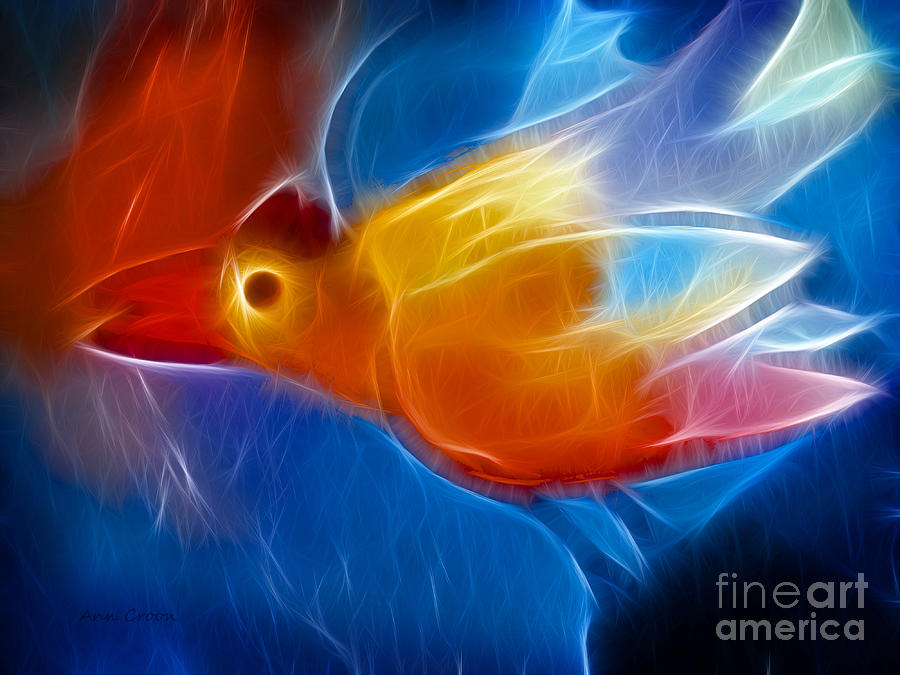
The ballet, written in 1910, is based on a Russian folk tale about
Prince Ivan, who is lost in an enchanted forest belonging to the
immortal, evil ogre Katschai. The prince aids the Firebird, a
nondescript, red bird, who in return gives him one of its
magic feathers. As the tale concludes, Prince Ivan, with
the help of the Firebird, destroys the ogre, thus
releasing the spellbound kingdom, including
his beloved Princess Elena.
his beloved Princess Elena.
 |
| Igor Stravinsky, 1929 |
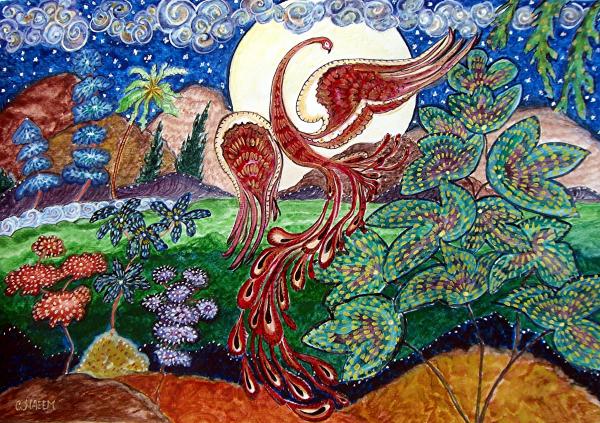
IGOR STRAVINSKY


1882-1971
Brief Biography
Biographical material mostly from Stravinsky,
Mike Venezia, Children’s Press.
Igor Stravinsky was born in a seaside town
in Russia in 1882. He grew up in a very
musical family. His father was an important
opera singer with the St. Petersburg opera,
and his mother was an excellent pianist. Igor
and his brothers often went to the opera
while they were growing up. They heard
their father's beautiful voice as he performed
in the major operas of the day.
Igor Stravinsky loved Russian fairy tales and
Russian folk music from the time he was a
child. When Stravinsky was a young man
most of the concert music heard in Russia
was written by composers from other
countries like Italy or France. But there was
a new feeling in Russia, a feeling of being
proud of their own country and wanting to
create music and art that told the stories of
Russia. Stravinsky was part of this new
group of composers that wrote music based
on Russian history and Russian stories.
When he was still a young composer he was
asked to write ballet music for a well-known
Russian folk tale called "The Firebird." Igor
loved this story and wrote music to fit the
characters: the brave prince, the wicked
demons and the magical Firebird. He created
sounds and strong rhythms that people had
not heard before. The Firebird ballet was a
great success and turned Stravinsky into a
star composer overnight.
In his later life Igor Stravinsky moved to
California and later became a U.S. citizen.
He composed music until he was 85 and
died when he was 88.

THE FIREBIRD
Listen and Draw Lesson
Igor Stravinsky’s The Firebird can be used to explore
the connection between music and story. Stravinsky
knew the traditional Russian folktale, the Firebird,
when he wrote the music for the ballet and the
subsequent orchestral suite.
Each of the 6 sections of the Firebird Suite evokes
a radically different mood that illustrates the action
of the story. These contrasting sections can be used
for a listening and drawing project.
Igor Stravinsky’s The Firebird can be used to explore
the connection between music and story. Stravinsky
knew the traditional Russian folktale, the Firebird,
when he wrote the music for the ballet and the
subsequent orchestral suite.
Each of the 6 sections of the Firebird Suite evokes
a radically different mood that illustrates the action
of the story. These contrasting sections can be used
for a listening and drawing project.
MATERIALS NEEDED:
Biography of Stravinsky
Firebird story in six sections
LISTEN AND DRAW worksheets
(a paper divided into 6 boxes)
Firebird Suite (1919) CD.
Optional: pictures of each section
PROCESS:
1. Briefly discuss the life of Stravinsky.
2. Play 1-2 minutes of each section of the Firebird Suite.
As they listen, the students draw whatever
characters and actions they imagine in the
appropriate section of their LISTEN AND DRAW worksheet.
(This worksheet is a paper divided into six boxes
to draw those images in which to create their own
story for the music. The result is like an over-
sized comic strip, but without any words.)

Play each 1-2 minute excerpt twice to give the
students time to draw. The sections might connect
into a story or each section can stand alone.
to draw those images in which to create their own
story for the music. The result is like an over-
sized comic strip, but without any words.)
Play each 1-2 minute excerpt twice to give the
students time to draw. The sections might connect
into a story or each section can stand alone.
3. When finished, let the students tell
their stories to one another, 2 by 2.
4. Ask the students to find one word that describes each
section and make a list on the board of student words.
Discuss similarities and differences in the mood of the words.
5. For another music class, do the
following for each of the 6 sections:
Show the Firebird story picture (if available)
Listen to the music again,
Read their one-word descriptions
Then read the story.
Discuss similarities with the Firebird
story and their own stories.
6. Extension:
Have the students write out the action for each of the
sections to create a written version of their story.

LEONARD BERNSTEIN
EXPLAINS "THE FIREBIRD"
The Firebird is based on an old Russian
fairy tale about a young prince—named
Ivan, of course—who goes hunting, and
finds himself in an enchanted forest. He
hears a sound in the trees, draws his bow
to shoot, and stops amazed when he sees
that his victim is a glorious creature, half
-bird, half-woman, in feathers of fire,
scarlet, gold, orange, purple. The prince
wants, of course, to capture this radiant
figure: She is doubly desirable; as a
fabulous bird and as a beautiful girl. Which
I suppose these days mean the same thing.
Anyway, he grabs her, and they struggle,
and the Firebird pleads with him to free her.
Ivan is touched by pity and love, and when
he does release her she gives him, out of
gratitude, one of her red feathers which,
she says in ballet pantomime, has magic
powers and will protect him against all evil.
And then she disappears into the night.



Suddenly the scene is transformed and
Prince Ivan finds himself in a lovely garden,
also enchanted, where a bevy of charming
young princesses are amusing themselves
by playing catch with apples. Don't ask me
why. It turns out that they are all prisoners
in this garden of the evil monster Kastchei,
the king of demons and devils. Of course
Ivan falls instantly in love with the most
beautiful princess, as in all such stories, at
which point nasty old Kastchei descends
upon them with all his ugly company of
horrid little monsters. But Ivan has the magic
feather and fearlessly wards off this mass
attack until the climactic arrival of the Firebird
herself, who hands him a golden sword with
which he terminates Kastchei's power, and
indeed his existence. As Kastchei dies his
demons collapse as well; the princesses are
freed, the Firebird puts all the evil spirits to
sleep forever, and flies away. All is well. And
there remains only the happy-ever-after
scene, at Prince Ivan's court, where the great
royal wedding takes place before all his
loving, kneeling vassals.



Now that's a dandy little bedtime story, but it
doesn't give you any of the real feeling of this
legend—the sense of very ancient times, of
primitive people, of a fantasy world in which
everything is made of mystery and wonder.
But all this can be told you most eloquently
by Stravinsky's music, so let's not wait any
longer. We are going to play not the whole
ballet, but a suite from it made by Stravinsky
himself, which contains most of the high
points of the ballet. It starts with a mysterious,
dreamlike introduction, filled with forest
sounds that are not of this earth. Then
suddenly the orchestra flashes, the Firebird
appears and does her solo dance.
Here is that first part.
[ORCH: Stravinsky - Firebird TO END OF FIREBIRD'S VARIATION]
Glorious music. Now Stravinsky's suite
skips to the enchanted garden, where
the princesses are dancing elegantly
to music full of grace and Russian
lyricism. This is interrupted by a crash
that may make you jump out of your
seats, as Kastchei and all his ghastly
crew fill the stage with horror. Here
are those two dances: First of the
princesses and then of the monsters.
[ORCH: Stravinsky - Firebird TO END OF KASTCHEI (1ST ENDING)]

out of you. But now for the end. Kastchei
is a goner, and we now hear the famous
Russian lullaby with which the Firebird puts
all the demons to eternal sleep. The
transition from this lullaby to the final scene
is one of the most magical moments in all
music. Everything is paralyzed with sleep and
stillness, and the music hovers in the air with
extraordinary shifting harmonies that actually
seem to convey the presence of the
supernatural. And suddenly, as if from
nowhere, comes that famous horn solo, an
ancient Russian folk melody—quiet, noble,
filled with dignity. And in that moment the air
is cleared, we are back in real life, at Prince
Ivan's court, at the wedding. It is a miraculous
transformation. And as this horn melody
repeats and repeats throughout the orchestra,
growing in intensity and grandeur, we behold
a spectacle of old Russia that is unforgettable
in its glory. You don't even have to see the
stage: The music tells you everything. This
music does honor to the art of ballet, and to
music, and to Stravinsky himself, the greatest
master our century has produced.
[ORCH: Stravinsky - Firebird BERCEUSE & FINALE]
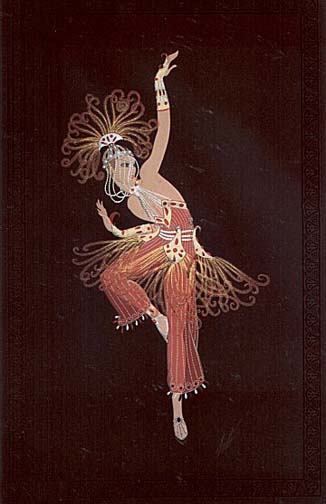 |
| Erte: Firebird |
MORE LESSON PLANS TO LOOK AT
http://www.bgfl.org/bgfl/custom/resources_ftp/client_ftp/teacher/english/w_firebird/index.htm
http://www.warrensymphony.com/wp-content/
uploads/2013/02/The_Firebird_Lesson_Plans.pdf
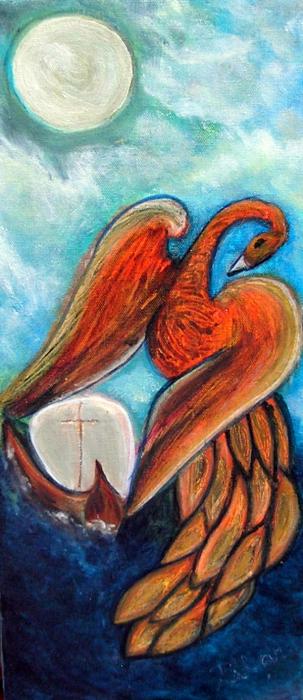
http://www.warrensymphony.com/wp-content/
uploads/2013/02/The_Firebird_Lesson_Plans.pdf

Guides/A%20Musical%20Delivery%20TG%202-5.pdf
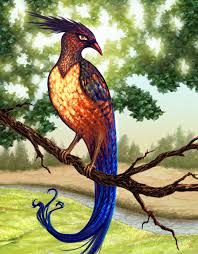

 |
| Gustav Adolphe Mossa |
FIREBIRD
Complete
Pierre Boulez, Conductor
Chicago Symphony Orchestra
Introduction
Kashchei's magic garden
Appearance of the Firebird,
pursued by Ivan-Tsarevich
Dance of the Firebird
Ivan-Tsarevich captures the Firebird
The Firebird entreats - Appearance of
the thirteen enchanted princesses
the Princesses' game with the golden apples
Sudden appearance of Ivan-Tsarevich
The princesses' Khorovod (Round Dance)
Daybreak - Ivan-Tsarevich
enters Kashchei's palace
Magic carillion, Appearance of Kashchei's
guardian monsters and the capture of Ivan
-Tsarevich - Intercession of the princesses
- Appearance of the Firebird
dance of Kashchei's retinue,
under the Firebird's spell
Infernal dance of all Kashchei's subjects
Lullaby (The Firebird) - Kashchei wakes up
- Death of Kashchei - Deep Shadows
Dissapearance of the palace and dissolution
of Kashchei's enchantments; animation of
the petrified knights; general rejoicing


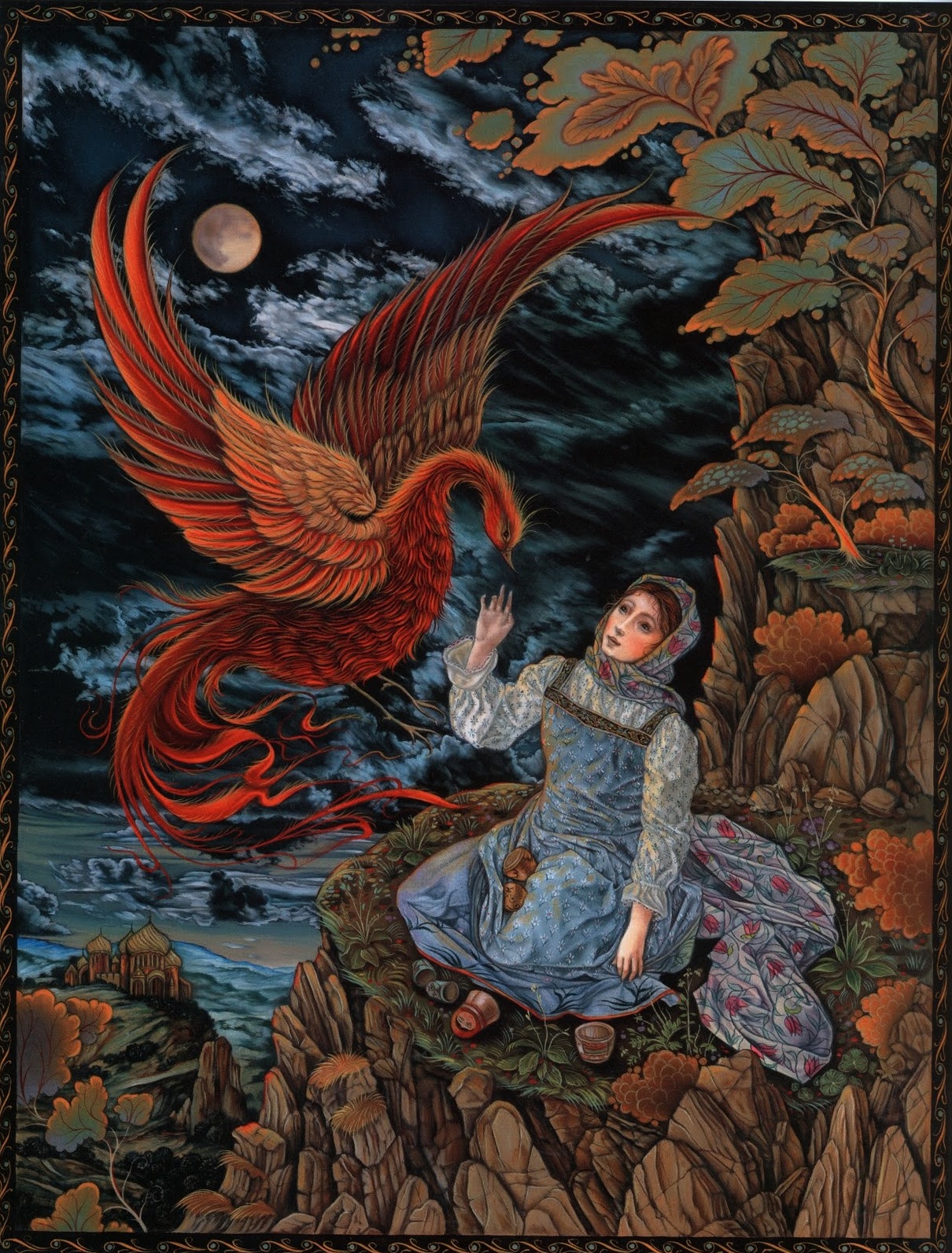

BERCEUSE and FINALE
FROM THE FIREBIRD SUITE
LESSON PLAN
(From the Atlanta Symphony Orchestra)
(From the Atlanta Symphony Orchestra)
BERCEUSE and FINALE
FROM THE FIREBIRD SUITE
James Gardner, Conductor

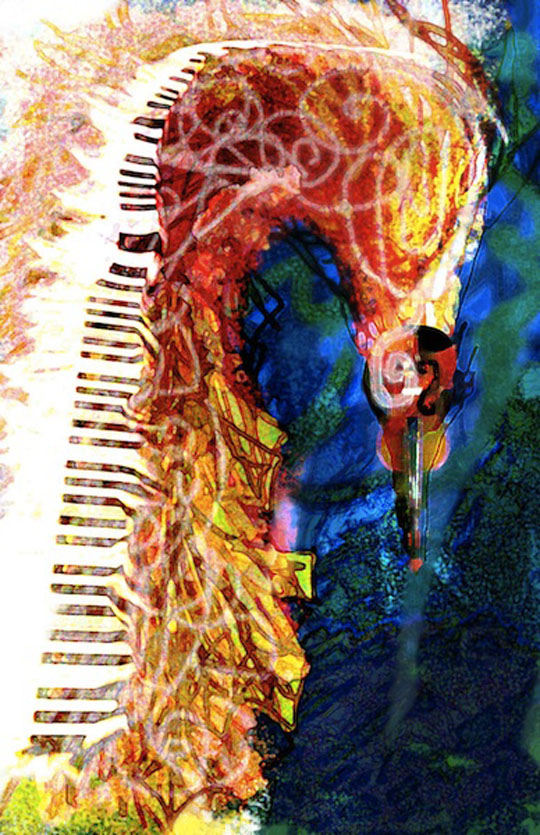






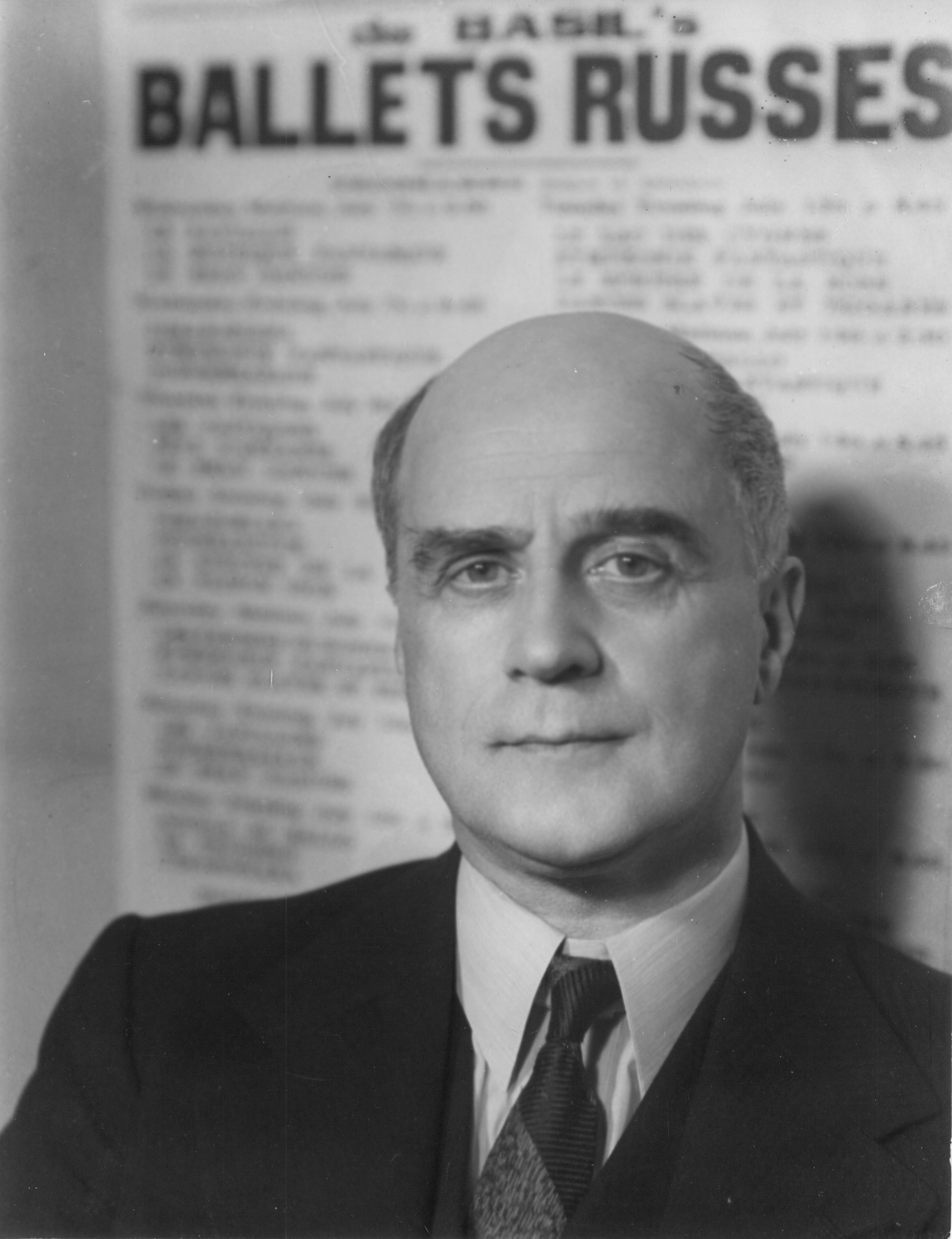
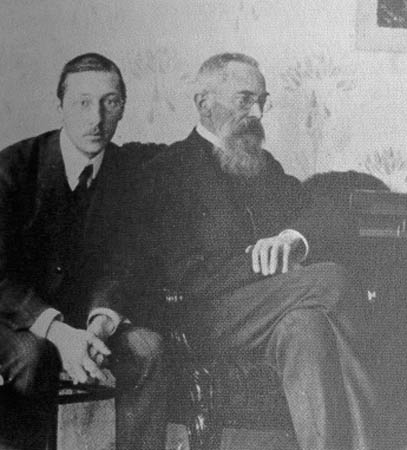


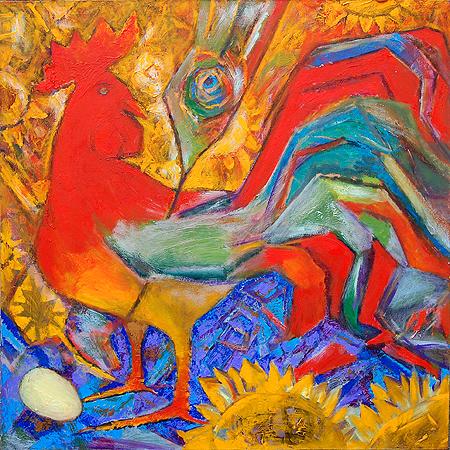


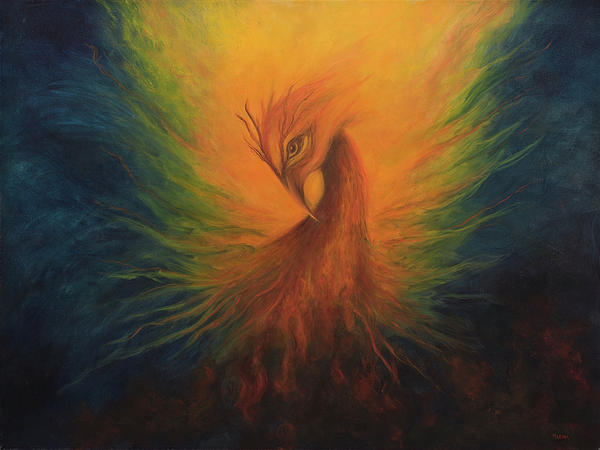



















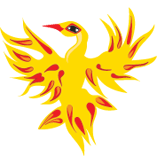
0097.jpg)
0098.jpg)

0087.jpg)
0088.jpg)
0089.jpg)
0090.jpg)
0091.jpg)

0092.jpg)
0093.jpg)
0094.jpg)
0095.jpg)
_Set%2BDesign%2Bfor%2Bthe%2BBallet%2B'The%2BFirebird01.jpg)



